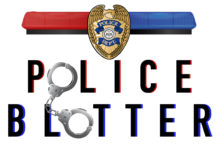Slippery Rock University has begun to see a return to normalcy and what a post-pandemic world looks like as it followed most of the nation Tuesday in removing the campus’s indoor mask mandate.
The move follows new guidelines released by the Centers for Disease Control and Prevention (CDC) that have allowed more than 75% of the country to forego mask-wearing, specifically indoors.
The guidelines are based on the CDC’s understanding that the virus in a specific area is not as high of a risk based on infection and vaccination rates alone. Other factors such as testing and monitoring systems, along with hospital capacity, must now be considered as well.
The new mask policy on campus comes as the university and nation see a sharp decline in the number of COVID-19 cases. The university made the decision based on the latest data and consultation with the university’s health partner, Allegheny Health Network, Behre said in his email statement Monday.
The university has said in the past it would follow the guidance that is best for the university and in line with recommendations from the CDC. Removing the masking requirement is making good on that promise, Behre said.
While students will not be required to wear a mask while in class or eating at Rocky’s in the Robert M. Smith Student Center (SSC), masks will still be required in a limited number of areas.
Students must wear a mask if they are going to the Mass Testing Center in the University Union and while inside the Student Health Center.
Mask will also be required while riding the Happy Bus or any other mass transit. That policy follows federal guidelines for public transportation.
Almost two years since the beginning of the pandemic, many, including Kristina Benkeser, have worked to get the university to a place where things could get back to how they were.
As the Director of Student Health and Wellness, Benkeser has been crunching the data that tracks COVID-19 cases within the student population. At the beginning of the semester, she had some concerns on how far the omicron variant would spread throughout SRU.
“Our campus-wide rates while they have been lower than [Butler] County in general, they still have that wide fluctuation which has been a thing with Omicron,” Benkeser said.
Since the start of the year, SRU has had 625 positive cases reported through either the mass testing center or Student Health Center. Many of those cases came from January and early February when the Omicron variant was spreading quickly throughout the state and country.
That spread led to incidence rates in the area being nearly 200 cases per 100,000 people. But just a fast as the new mutation spread from person to person, the number of cases began to drop over the course of a few weeks. On the day before the CDC updated its mask guidance, SRU’s incidence rate was just under 30 per 100,000.
Still, no matter how people feel, the pandemic is far from over, Benkeser said. She said people need to understand that the pandemic is not over in the United States until it is over in the world.
“We are way too mobile,” Benkeser said. “This isn’t like the plague.”
Benkeser said COVID-19 will have to continue to be in the back of our minds as the world works to contain pockets of the virus in the future.
Still, there has been progress in getting back to normal and the key to maintaining this momentum is making sure people are getting vaccinated and boosted, she said.
“For an industrialized, wealthy nation, we have really poor vaccination rates,” Benkeser said. “This is why we have had a bigger death problem, why we have had a bigger hospitalization problem than some European countries.
“Even though they have equally high incidences, their vaccination rate is protecting from death and hospitalization.”
Once vaccines became available, the university asked students to upload their vaccine cards to help make decisions whether to mask or not. As of Feb. 22, 54% of the student population that attends at least one class in person have uploaded their initial vaccination record.
Where it gets tricky is tracking the number of students who have received their booster, Benkeser said.
Only 12% of those students have uploaded their booster vaccination records, according to Benkeser. Many times, when the health center staff contacts a student through their COVID-19 protocols, the student tells them they are vaccinated and boosted but there is nothing in their records showing that.
The university has continued to hold COVID-19 vaccine clinics on campus. During the latest one, held Feb. 18, 63 students received either a shot for their first series or a booster shot.
Despite watching the rate of COVID-19 infection rise and fall throughout the past two years, Benkeser remains optimistic.
“I’m hopeful that as the semester goes on that the rates continue to stay down,” Benkeser said. “Then maybe we can come out the other side of this.
“It’s really not the time to let our guard down.”
Throughout campus, many students and professors are getting to see entire faces in their classrooms for the first time. But some still choose to wear a mask either for themselves or others. Behre hopes the community can learn to respect everyone’s position going forward.
“What I hope is that people take to heart the notion that we are a community that cares for each other,” Behre said. “And if they’re in a situation where there is a particularly vulnerable person, that they have the human decency to put their mask on.
“It’s really not that hard.”








